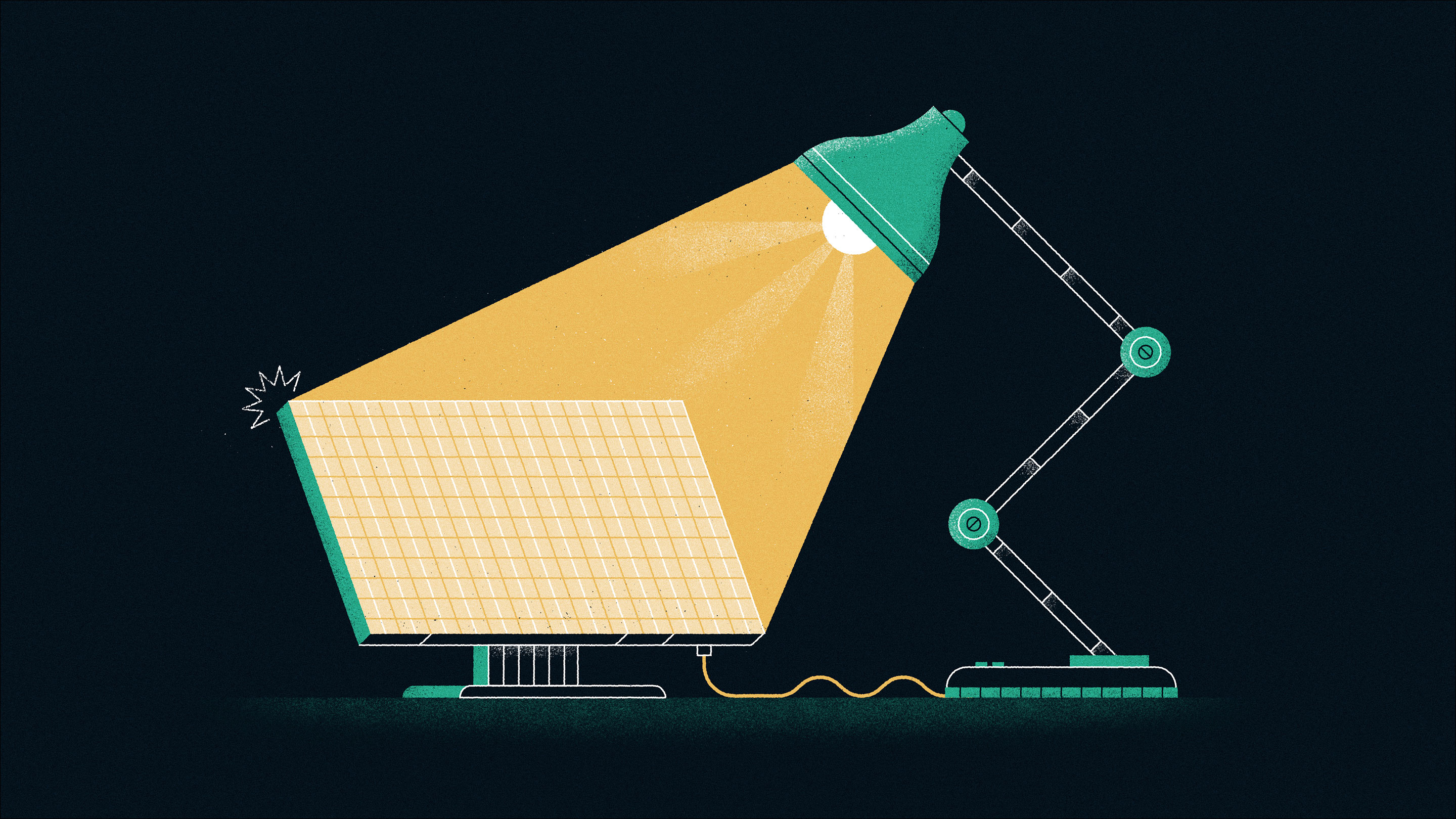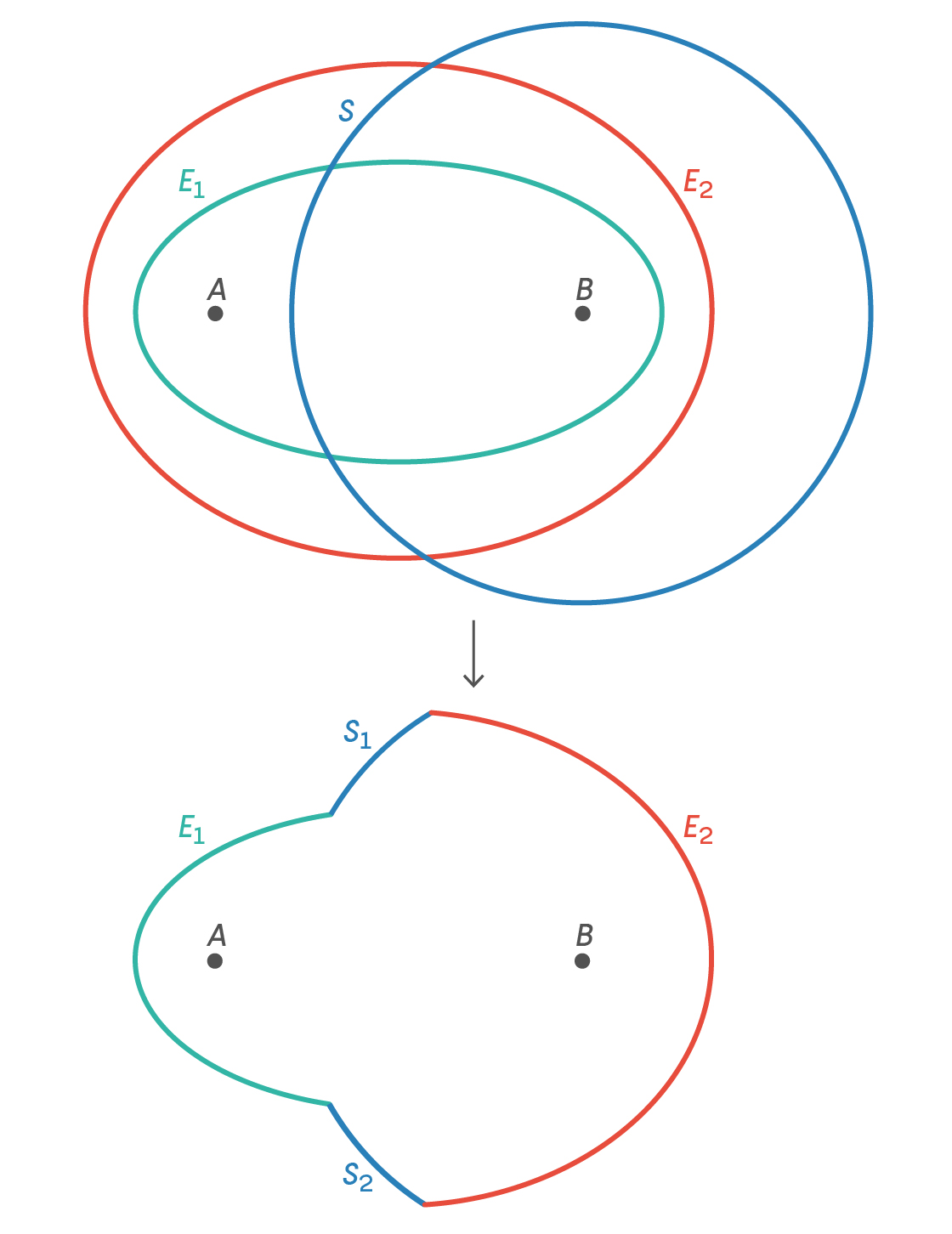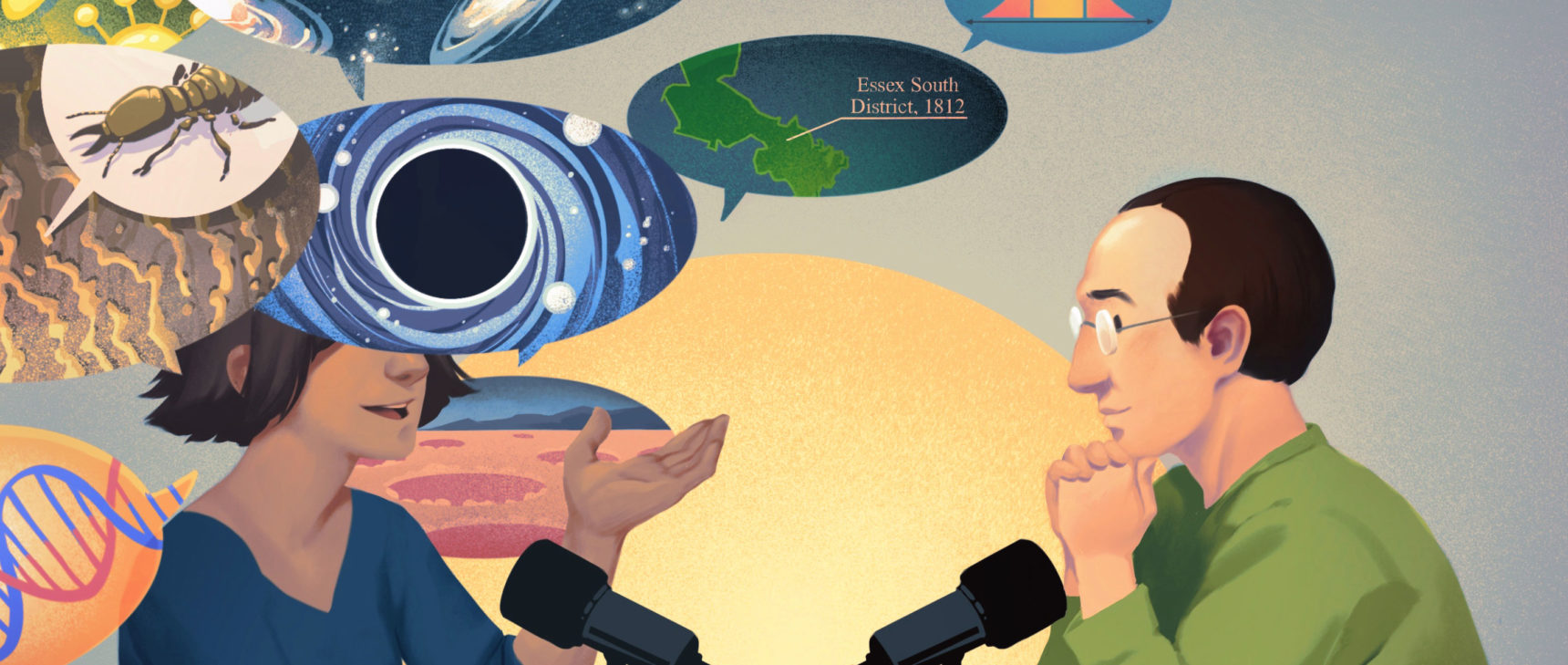How to Design a Perpetual Energy Machine

James Round for Quanta Magazine
Introduction
It is a tradition among puzzle columnists to pay homage to April Fools’ Day by testing the credulity of their readers with outrageous propositions. The late (and great) Martin Gardner, who authored the famous monthly column Mathematical Games in Scientific American for a quarter century, once used an April column to describe a thought experiment that purported to falsify the special theory of relativity. (It was a version of the bar and ring paradox.) Needless to say, special relativity is still hale and hearty, but the thought experiment seems pretty convincing at first glance. In the spirit of this tradition, here are two delicious paradoxes for you to get to the bottom of.
The first is in the realm of thermodynamics. We are all familiar with the notion that the temperature of two bodies in thermal contact with each other tends to equalize over time, which means that useful work cannot be extracted from the system in perpetuity. This spoilsport conclusion is decreed by the second law of thermodynamics, which states that entropy, a measure of the disorder of a closed system, inexorably increases. This contrasts with special relativity and other physical laws that are reversible in time. However, the nonreversibility of entropy is merely caused by the mathematics of large numbers. There is no inviolable principle of physics that enforces it. It is therefore statistically quite possible for entropy to decrease for small periods of time. But now we have a breakthrough! Some intrepid scientist has devised a way to violate the second law and create a machine from which energy can be extracted forever.
Paradox 1

The geometric figure shown is constructed as follows. E1 and E2 are sections of two concentric ellipses with foci located at points A and B. S1 and S2 are arcs of a circle with center B. Since they are arcs of the same circle, every straight line from B to S1 or S2 is a radius and therefore normal to the inner surface. This entire figure is a cross section of a hollow object that is created by the solid of revolution of the plane figure. The inside surface of this object is silvered and 100% reflective (or as close to it as practically possible). At A and B are small spherical blackbodies made of thermoelectric materials. They each have thin wires leading to battery terminals outside. The whole structure is completely sealed.
The following are all true statements about the physics of these blackbodies — examine them carefully.
- A uniform spherical blackbody radiates light energy equally in all directions depending solely on its temperature: The hotter it is, the more energy it radiates.
- A blackbody absorbs all the light that falls on it. The more energy it absorbs, the higher its temperature rises.
- Rays of light travel in perfect straight lines for all practical purposes in large macroscopic objects, because their wavelengths are extremely small in comparison. In this case, the entire object can be made as large as required to minimize any quantum effects that could cause rays to deviate from straight lines, so this possibility can be effectively ignored.
- By elementary optics and geometry, light rays originating at the center of a hollow reflective sphere are reflected back to the center by its inside surface.
- Again, by elementary optics and geometry, light rays originating at one focus of a hollow reflective ellipsoid are reflected to the other focus by its inside surface.
- If two bodies at different temperatures are made of the appropriate thermoelectric materials and are connected to each other in an electric circuit, their voltage difference will cause an electric current to flow in the circuit.
Now look at the geometry of the structure. All rays originating from point A will impinge on E1 or E2 and will be directed to the other focus, B. The geometry is such that no rays from the blackbody at A will fall on the arcs S1 or S2. Thus, 100% of the radiation originating from the blackbody at A will land on and be absorbed by the blackbody at B. Similarly, rays originating from point B that land on E1 and E2 will be reflected to A. However, a significant proportion of rays that start from B will land on S1 or S2 and be reflected back to B. Let us say that this proportion is 20%. So if the blackbodies start out at the same temperature, and each emits 100 rays of equal energy per unit time, B will receive and absorb 120 rays, while A will receive and absorb only 80 rays. Thus, blackbody B will heat up relative to blackbody A. If we connect the battery terminals outside, usable current will flow between them until the blackbodies equalize in temperature. If their temperatures do not equalize, the current will flow forever. But as we saw, the equal temperature condition is unstable: Even if this condition is ever reached, object B will once again heat up relative to A because of the geometry, and the current will continue to flow. In effect, we will have an inexhaustible source of energy!
Will this inexhaustible battery work as advertised? Why or why not?
Paradox 2
Consider the following stipulations:
- The solution to this Insights column will definitely be published in Quanta in May.
- If, for the purposes of this problem, we define a week as starting on a Monday and ending on a Sunday, then every day in May will fall in one of five separate weeks (one partial week followed by four full weeks). I declare with certainty that you will not be able to predict in which of these five separate weeks the solution column will be published.
Now, as we know, Quanta readers are a brilliant bunch. Suppose a reader reasons as follows: “If the column is not published by the end of the fourth week, I will be able to predict with certainty that it will be published in the fifth week. Therefore, it cannot be published in the fifth week. But if it cannot be published in the fifth week, then, if it is still unpublished at the end of the third week, I can be certain that it will be published in the fourth week. Therefore, it cannot be published in the fourth week. Now I can apply the same serial logic to prove that it cannot be published in the third, second or first weeks. Therefore, the solution cannot be published at all!”
OMG, this puts me in a terrible bind! My editor will certainly not be pleased. Is this reasoning valid? Why or why not? What if there is a tiny probability (say 0.001) that the column will not be published at all (we all get COVID-19, or the financial system collapses and no business activities can take place)? Assume that “certainty” now means “99% or greater probability of being right.” Does that change the conclusion?
Paradoxes are fun to ponder, because they often expose either faulty habits of thought or wrongful expectations. Consequently, they can be very instructive. What do you think is the key mental error, if any, in these two paradoxes? I’d also love to hear your favorite paradoxes.
Happy puzzling!
Editor’s note: The reader who submits the most interesting, creative or insightful solution (as judged by the columnist) in the comments section will receive a Quanta Magazine T-shirt or one of the two Quanta books, Alice and Bob Meet the Wall of Fire or The Prime Number Conspiracy (winner’s choice). And if you’d like to suggest a favorite puzzle for a future Insights column, submit it as a comment below, clearly marked “NEW PUZZLE SUGGESTION.” (It will not appear online, so solutions to the puzzle above should be submitted separately.) Update: The solution has been published here.
Note that we may hold comments for the first day or two to allow for independent contributions by readers.



